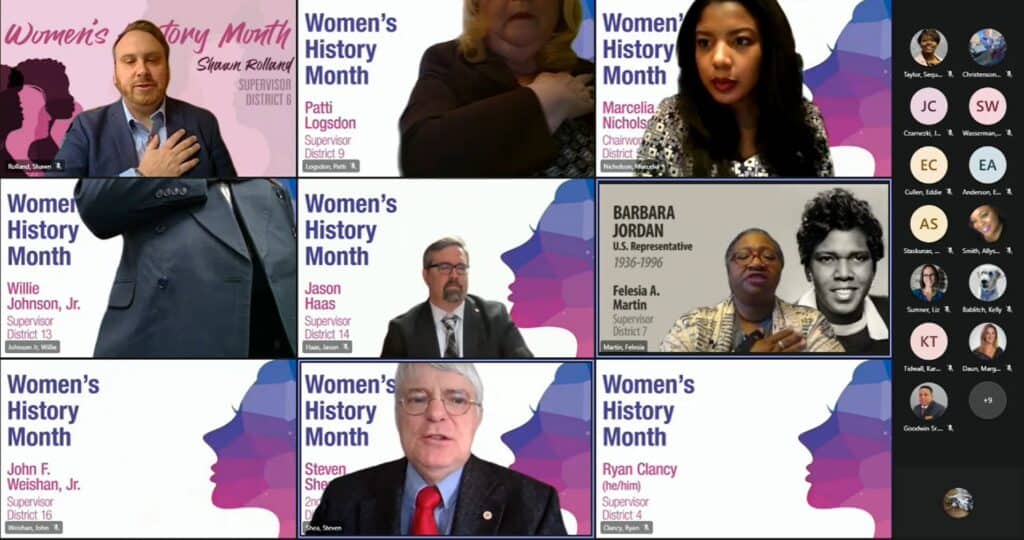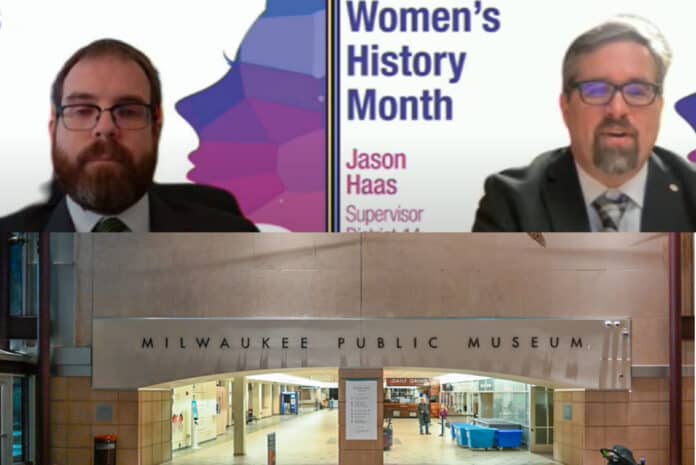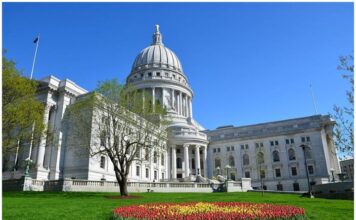Second in a series.
Wisconsin Right Now, with a project-specific grant from No Better Friend Corp., Kevin Nicholson’s non-profit organization, is investigating the Milwaukee County Museum’s rhetoric, cost estimates and plans for a new museum. Read the first article here.
“We must say goodbye to most of it.”
Then-Milwaukee County Supervisor Jason Haas made that comment about the current Milwaukee Public Museum’s exhibits, speaking in the hastily scheduled public meeting where the Milwaukee County Board approved giving $45 million for a new facility, setting the $240 million project on a fast track to reality.
Haas, who introduced the new museum project, was referring to beloved exhibits in the current museum, like dioramas, dinosaurs and immersive experiences.
The “future hinges” on a yes vote, he told his fellow supervisors at the March 15, 2022, meeting, as he urged them to support the new museum project, according to video obtained by Wisconsin Right Now.
The funding easily passed. The video obtained by Wisconsin Right Now shows that the vote – despite the large amount of taxpayer dollars involved – sparked only minimal debate and lasted less than an hour. County supervisor, Ryan Clancy, a liberal who runs an entertainment complex and once worked as an MPS teacher, was the only supervisor who raised significant concerns about the project, which sailed through with no public comment.
During the opening Pledge of Allegiance, Clancy and Supervisor John Weishan, Jr. disappeared from the virtual meeting before returning right after the Pledge ended. Supervisor Felecia Martin muttered, “someday,” after the phrase, “with liberty and justice for all.”

Clancy said museum officials’ claims that the new museum would save the county money were false, claimed the two meetings to approve the county’s funding for the new museum were so hastily called that few members of the public had a chance to attend either one and claimed the museum will be moving from a quasi-public entity to a private one, giving it little accountability to the public going forward. His comments did not draw much interest from his fellow members of the County Board.
“There is no accountability to the public for this new entity,” Clancy said. He said it will be a “fully private entity that is not beholden to us.”
Noted Clancy: “We will be spending more money for the next few decades for the opportunity to spend $45 million for a private entity.”
Despite his concerns, few other supervisors seemed to share them.
The video shows that there was almost no discussion of other options, including staying in the current museum and purchasing off-site storage to protect collections. Before the meeting, a county committee had recommended approving the new museum after hearing from museum officials, who stressed racial and equity concerns when asking for approval. Groundbreaking is set for December 2023, but the museum has been vague about its exhibit plans, generating major public anger by not clearly delineating its plans for popular exhibits like the Streets of Old Milwaukee and the European Village.
Haas said during the meeting that the county had over “four years to prepare for this decision,” although the museum is still refusing to explain which exhibits, specifically, will change. Many members of the public have expressed surprise to suddenly learn that the museum will be moving.
Haas described the “emotional connection” to the current museum that many have, including a “roaring T-Rex,” the “dioramas on the third floor” and “all the immersive exhibits.”
“Yes, we know it, and we love it,” he said. “And yet sooner or later, we must say goodbye to most of it.”
“The truth is, we have to face the fact that we will have to say farewell,” he said.
He added: “It’s a loss and we should legitimately grieve that loss. But today we need to prepare for what is next…Yes, it will be markedly different from the one we know, and the difference is profuse. However, we must choose today.” He asked for his colleagues’ support for “this deal,” filing a motion for adoption of the $45 million.
Most of the discussion during the meeting focused on an amendment by Clancy, who appeared to be the only supervisor who was scrutinizing the rhetoric surrounding the plan. He wanted to suspend the county’s contribution for the museum’s operating expenses.
Clancy said he would have been “thrilled to pay for renovations” to the current building, instead of a new museum, but he added that this “ship has sailed… It looks like the museum will be leaving us from the building they have occupied for many years.”
He noted that museum officials were saying it would cost $250 million to restore the current facility. [See our first story in the series, in which we exposed that racial and equity concerns over supposedly outdated exhibits are responsible for about $80-90 million of that estimate, which ballooned by $120 million since a 2015 consultants’ report.] The museums’ officials also blame mounting deferred maintenance concerns and what they say is an inadequate current facility. Future stories will explore those claims.
During the meeting, Clancy raised concern that the “new entity’s lawyers have been really careful not to use the word public. They’ve been very clear this new entity will be a private one, the $85 million in public funds…notwithstanding.” The $85 million referred to the $45 million in county funding on the table and $40 million from the state.
“This last year, we were lobbied really hard by consultants to get our votes on this,” Clancy said.
He said he was also concerned museum officials “will not agree to voluntarily recognize the union,” and he was upset “we can’t use the public word anymore,” because the museum wanted to “form a new entity that removes the public.”
Clancy stressed that the “only accountability to the public is now before this is signed.” He said he was “concerned with the haste” through which officials were “pushing the plan” through at the “last minute.”
Some supporters of the new plan “make it sound like it would be boarded up next week” if the county delayed the vote, he said. “That’s not the case. This has been a long time coming. Why we’re not providing more than a few days’ public notice for these meetings is disturbing.”
Clancy said the media and public have “been struggling” to follow along. He said that only two members of the public showed up at the “last, last-minute meeting” on the topic – the committee meeting where the new museum funding was recommended to the full County Board. “We should have more robust consideration,” he said, due to the size of the county’s investment.
“So many museum employees wanted to speak but could not because they only gave a few days notice,” he said.
Supervisor Willie Johnson responded by saying that the museum had an accreditation deadline to meet the following month.
“It’s time to go forward,” he said.
Supervisor Sequanna Taylor said she was concerned the county will be “stuck with” the current building, saying it is “out of code.”
She expressed concern the county would be “holding an eyesore in the middle of downtown.”
Supervisor Priscilla Coggs-Jones said there were “deferred maintenance” concerns in “black and brown communities.”
She said that she wanted to be assured that the people she represents would find the new museum relatable.” According to Coggs-Jones, “When I go to the museum, I don’t really see any exhibits and displays in nature to the folks I represent.”
Clancy said museum officials have been “telling us what they’re going to do in a very unilateral way.”
According to Clancy, there were “two last-minute meetings.” The way they were called provided “no real accountability to the board and the public,” he said.
In the end, his amendment failed 13-5. The new museum funding passed on a 14-4 vote, with Supervisors Russell Antonio Goodwin, Sr. Coggs-Jones, Sequanna Taylor, and Sylvia Ortiz-Velez voting no. Clancy ended up voting for it.
There was no debate on the actual motion.































